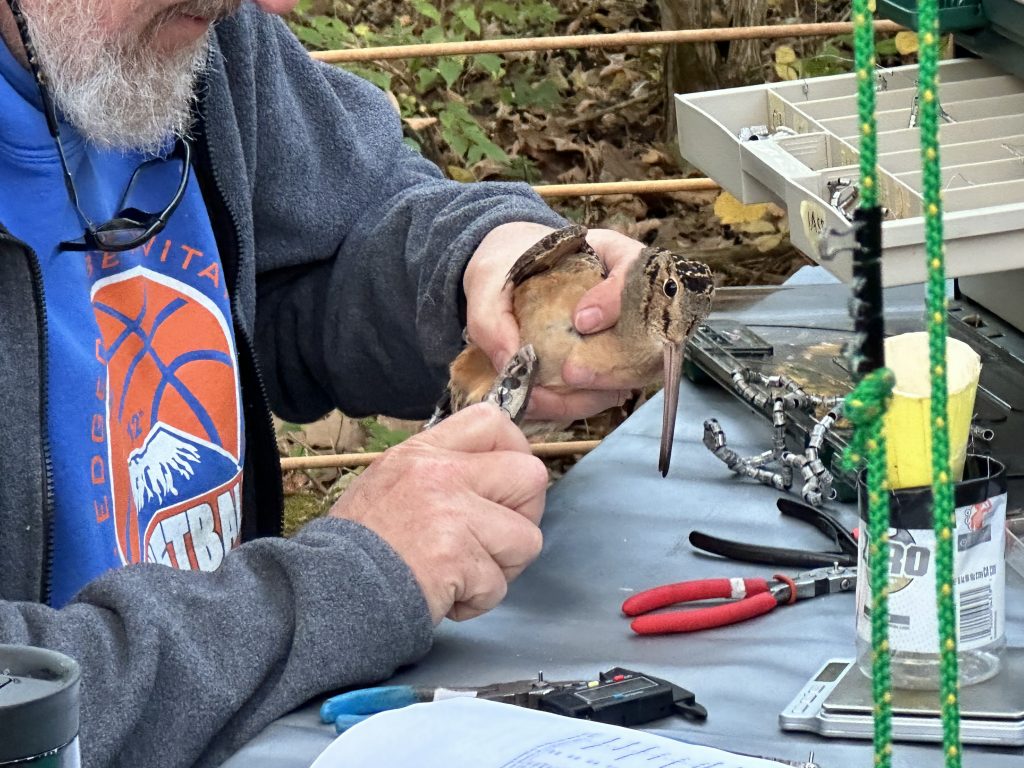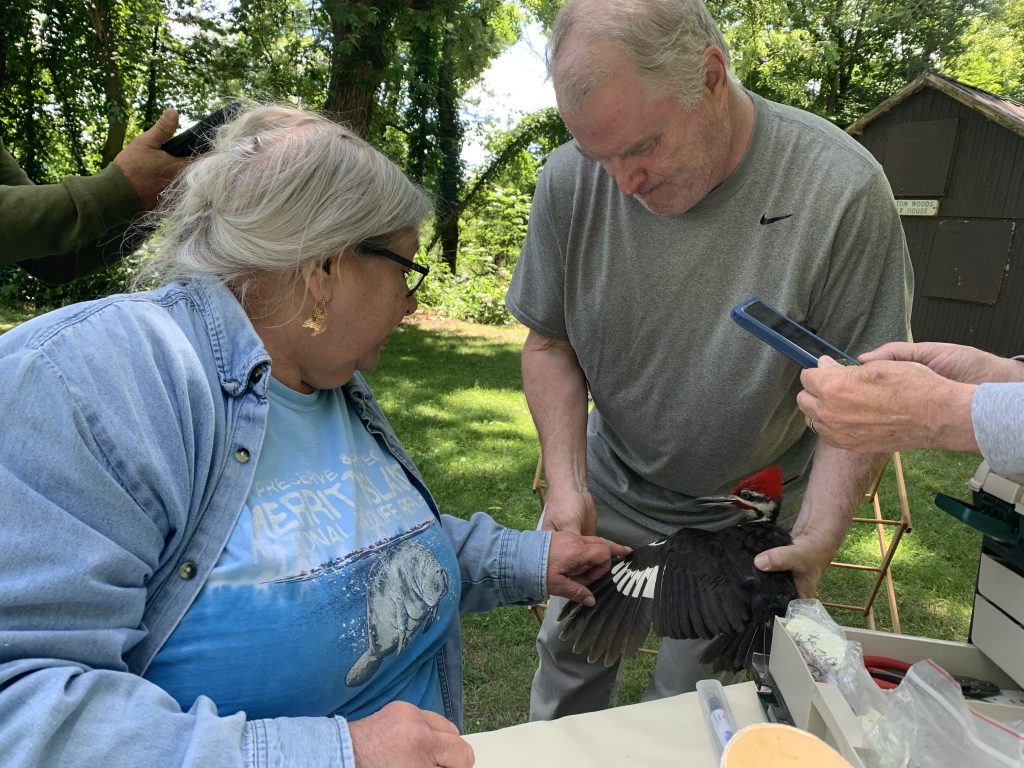
Bird Banding
At AREI, we use bird banding as a core part of our research to study the movement, survival, and health of native bird populations. Each bird we band receives a uniquely numbered aluminum band issued by the U.S. Geological Survey, serving as a permanent ID for mark and recapture studies. When a bird is recaptured or resighted, that data helps us track long-term trends in migration and population changes. All our work is conducted under federal permits to ensure ethical and standardized methods. Through this process, we gain the insights needed to protect birds before they become at risk.
Bander Training and Education
At AREI, bird banding is not only a research tool but also an educational experience. We train students, volunteers, and community members in the scientific principles and ethical practices of bird banding through hands-on instruction. This process teaches data collection, species identification, and careful bird handling under federal guidelines. Our pedagogical approach emphasizes experiential learning—bridging field biology with conservation science. By participating, learners gain skills in scientific observation, ecological inquiry, and collaborative research. Banding becomes a gateway to understanding broader environmental issues, fostering curiosity, responsibility, and stewardship. It’s where science meets education—and where future conservationists take flight.


Project Owlnet
AREI proudly participates in Project Owlnet, a continent-wide initiative focused on studying the migration of Northern Saw-whet Owls. Each fall, we operate a standardized banding station to safely capture and band these elusive nocturnal migrants. Our involvement contributes valuable data to a larger network of researchers tracking owl movements, population dynamics, and habitat use across North America. The project also offers unique educational opportunities, allowing students and community members to engage in nighttime research and learn about the techniques of owl banding. Through Project Owlnet, we connect local conservation action with continent-scale understanding of owl ecology.
Photographic Bander’s Manual
One of AREI’s ongoing projects is the creation of a photographic bird banding guide focused on native species of southwestern Ohio. This resource compiles standardized images of birds in hand, emphasizing key features used to determine age and sex—such as molt limits, plumage wear, and feather shape. Designed as both a training tool and field reference, the guide supports more accurate data collection and consistent identification among researchers, students, and volunteers. By highlighting local species, this project strengthens our regional monitoring efforts and contributes to ongoing research and educational initiatives, providing a foundation for both scientific study and public engagement.


Pesticide Use and Avian Ecology
At AREI, we are investigating the impact of neonicotinoid pesticides—widely used agricultural chemicals—on bird populations in southwestern Ohio. These pesticides, often present in treated seeds and runoff, have been linked to direct and indirect effects on birds, including reduced reproduction, neurological impairment, and declines in insect prey abundance. Our research focuses on how these chemicals affect common farmland and edge-dwelling species, especially during breeding and migration. By combining field observations, population monitoring, and collaborative data analysis, we aim to better understand the ecological consequences of neonicotinoids and inform land management practices that prioritize both agricultural productivity and bird conservation.
Insect Diversity and Migratory Stop-over Success
AREI’s research explores how declining moth populations impact the energetics of migratory birds at critical stopover sites in southwestern Ohio. Many migratory species, especially thrushes and warblers, rely on moths and other nocturnal insects as high-protein food sources during their long journeys. As moth abundance declines due to habitat loss, pesticide use, and light pollution, birds may face reduced foraging success, leading to delayed migration or compromised body condition. By studying the intersection of invertebrate ecology and avian physiology, we aim to understand how changing insect dynamics influence bird health and behavior, and to advocate for habitat management that supports both.


MAPS Breeding Bird Survey
AREI participates in the Monitoring Avian Productivity and Survivorship (MAPS) program, a continent-wide effort to study breeding bird populations through standardized banding protocols. Conducted during the summer months, MAPS banding helps us gather data on bird productivity, survival rates, and population trends across southwestern Ohio. By operating a consistent station at Hueston Woods, we contribute to a long-term dataset that informs regional and national conservation strategies. This research is vital for understanding how environmental changes—such as habitat loss and pesticide use—affect bird reproduction and population dynamics. Through MAPS, we connect local fieldwork with large-scale efforts to protect breeding birds.

